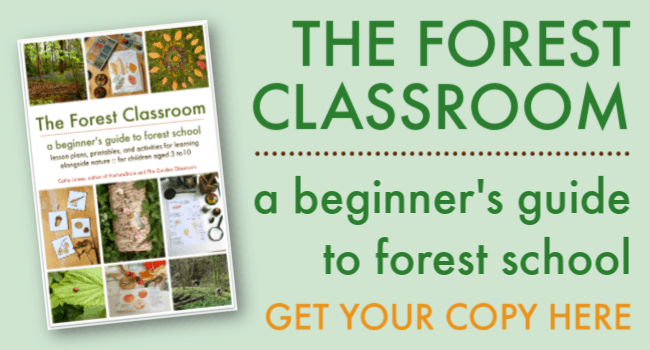Connect your children to the planet and learn why we have seasons. You can also use the seasonal lessons plans and printables for seasonal activities all year round.
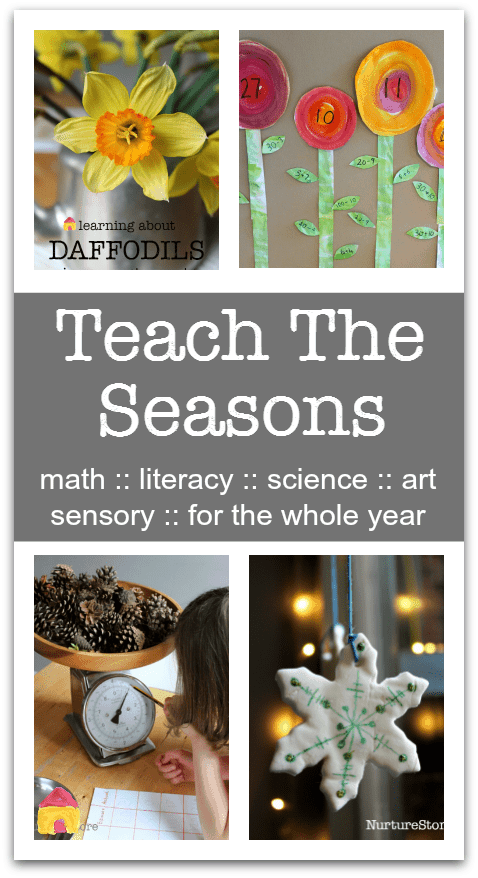
Why do we have seasons?
Today, let’s learn about the seasons and why we have them. Plus, explore our resources for spring activities, summer activities, autumn activities, and winter activities.
Be sure to sign-up at the end of this article to receive all our free seasonal lesson plans, activities, and printables.
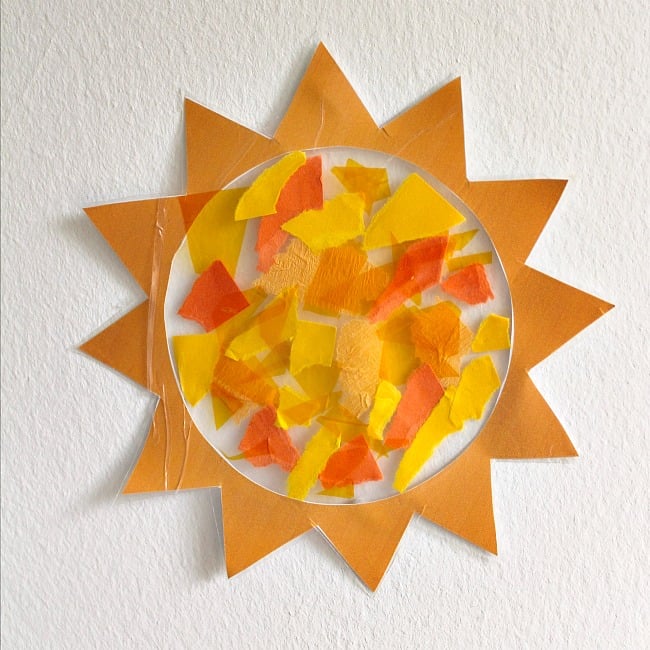
A seasonal story of a celestial dance
There are three main characters in our seasonal story: the Sun, the Earth, and our Moon. All three dance around together in a daily, monthly, seasonal, and annual cycle.
The Moon moves around our Earth each day.
And together the Moon and our Earth move all the way around the Sun, over the course of the year.
The way the Sun, Earth, and Moon dance around together gives us our day and night; our spring, summer, autumn, and winter; and the cycle of the natural year.
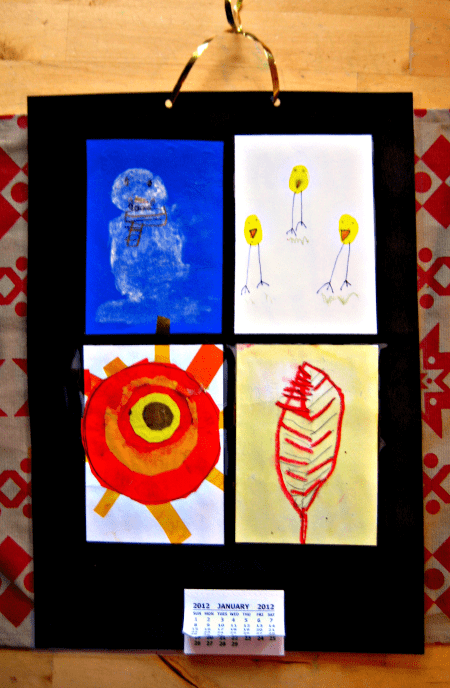
Four seasons in one year
It takes 365 days for the Earth to travel around the sun – one year.
During this year, as the Earth moves around the sun, we have our seasons: spring, summer, autumn, winter.
One important thing to know is that the Earth is tilted. As it moves around the sun it doesn’t sit straight upright with the North Pole exactly at the top and the South Pole exactly at the bottom. Instead, it leans to one side a little.
This tilt is very important, because it means at certain times of the year more of one part of the Earth is facing the sun than at other times. This tilt gives us our seasons.
In our Spring Workshop we learned that in June the northern part of Earth is titled towards the sun, and this means we get the most hours of sunshine – giving us short nights and the longest day of the year. It’s when people living in the northern part of Earth have summer.
In September, the Earth has moved further around the sun, and now the tilt means that the sun is facing right at the middle of the Earth. The rays of the sun are shining on the northern and southern parts of the Earth equally. This means we get about the same number of hours of day time and night time. We call this time of year autumn, and the day of the year when we have the most equal day and night is called the Autumnal Equinox. This year that day is on September 22nd.
After the Autumnal Equinox the tilt of the Earth means we will get fewer of the sun’s rays shining on our part of the world each day. The days will get shorter, and the nights will get longer, all the way through to the shortest day of the year at the Winter Solstice in December. We’ll learn more about this in the Winter Workshop.
People living in the southern hemisphere have their seasons at the opposite time of year to us, so when we are having autumn, they are having spring.
Watch this video to see the movement of the Earth around the sun.
Follow the sunset
You might like to track what time the sun sets each day this week. Does it get earlier or later each day? [For safety reasons, tell children not to look directly at the sun.]

Talking points for every season
You can use these questions for circle time to start a conversation about the changes each season:
What happens this season where you live?
What do you notice happening in your garden or in the woods?
What foods do you see in the market?
What are the bird and insects and other wild animals doing at this time of year?
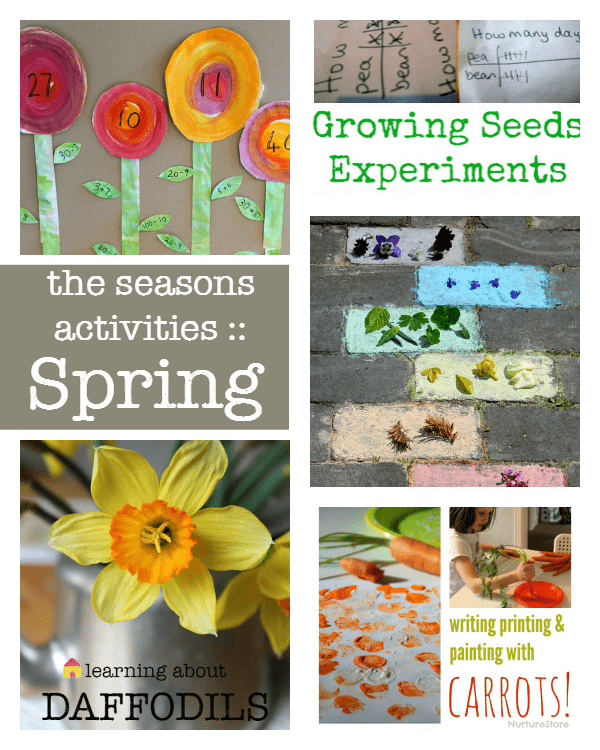
Spring resources and activities
Download the complete Seasons School Spring Curriculum here
Spring Unit, Egg Unit, Seeds and Shoots Unit, Daffodil Unit
Try these spring literacy ideas
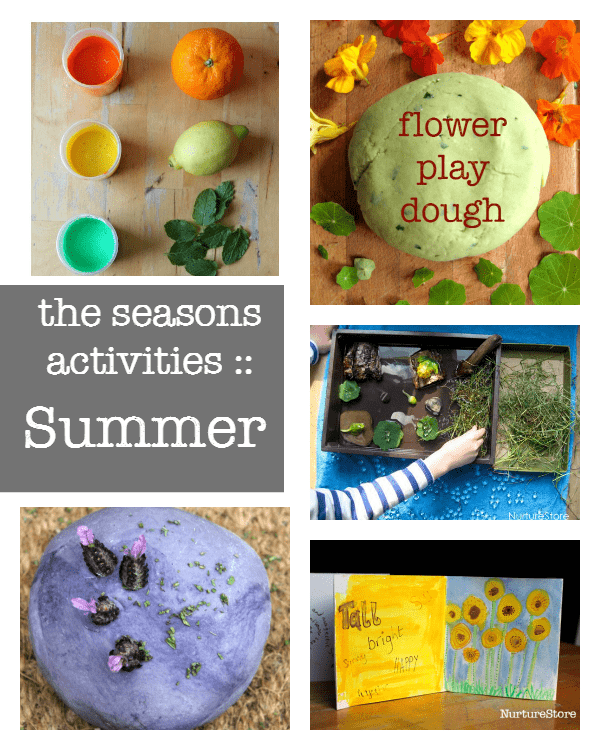
Summer resources and activities
Download the complete Sunflower School curriculum
Try these summer sensory play ideas

Autumn resources and activities
Download the complete Seasons School Autumn Curriculum here
Try these autumn literacy ideas
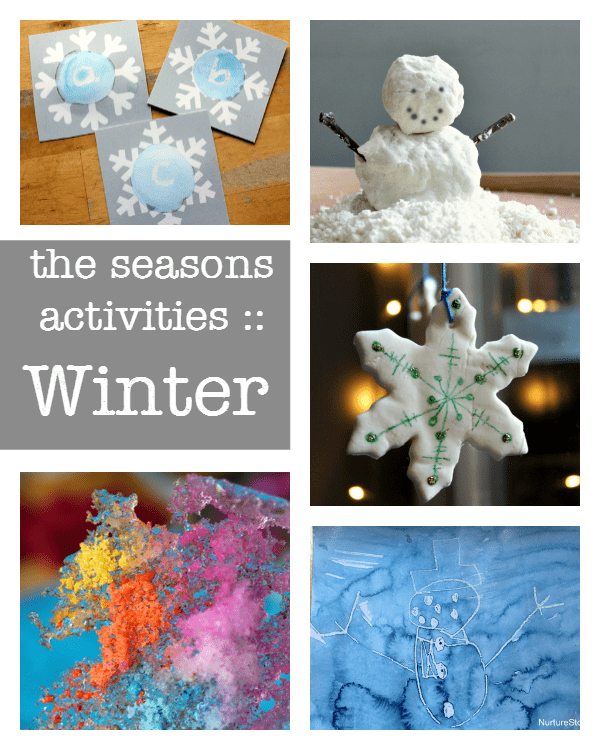
Winter resources and activities
Download the Ice and Snow Unit here
Download the Winter Workshop here
Try these winter sensory play activities
Try these winter literacy activities
Try these winter math activities
Try these winter art activities
Try these winter science activities
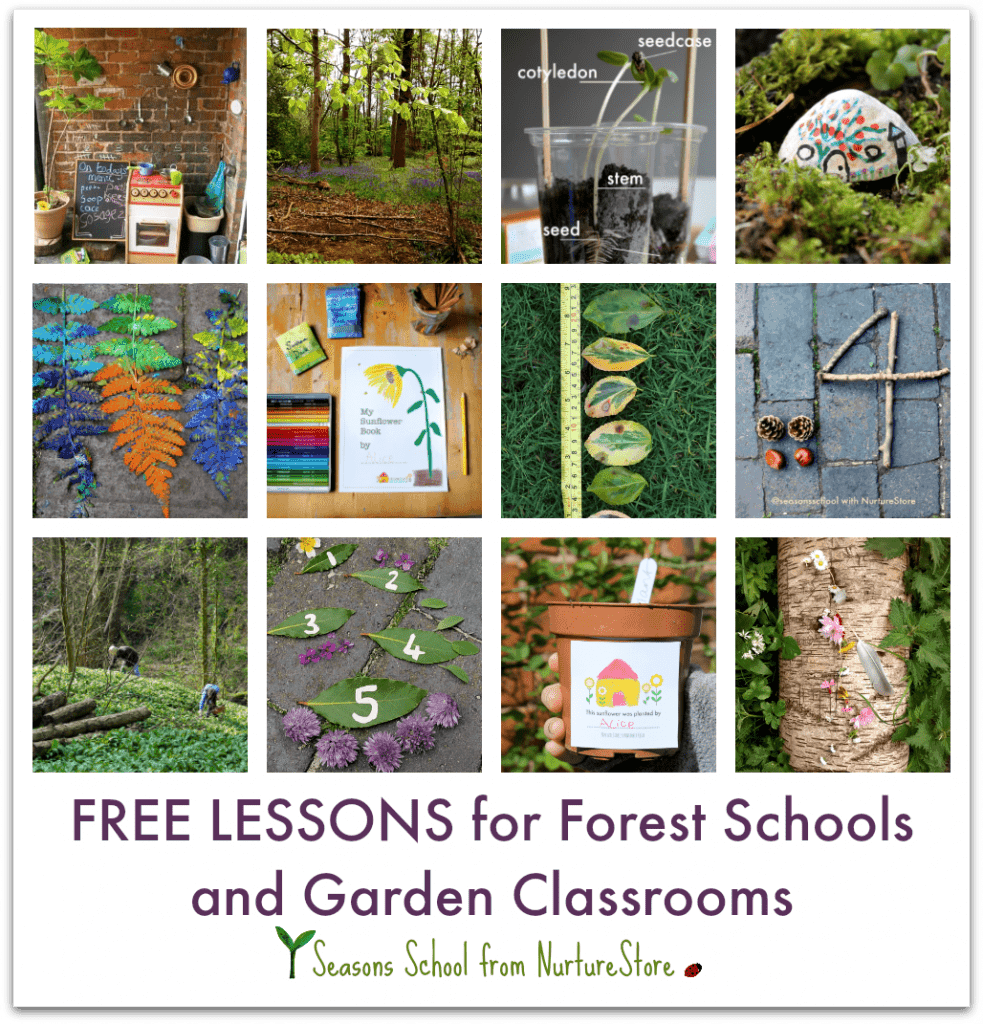
Free Forest School and Garden Classroom resources!
Join my weekly email service and I'll send you FREE printables, lesson plans, and activity ideas that you can use with your children in your forest school and garden classroom.
Seasons School is NurtureStore's year-round program of living and learning with nature. Our activities and resources focus on hands-on, nature-based learning that connects children with the natural environment.
If you're looking for nature study lessons, arts and craft projects, campfire recipes, foraging ideas, outdoor math and literacy activities, outdoor games, and ways to explore forests, gardens, and outdoor spaces - think of NurtureStore as your forest fairy godmother!
Whether you're in a forest school or outdoor classroom, running a school gardening club, bringing nature lessons into your class, home educating with nature, or wanting to connect with the great outdoors at the weekend, you will love the Seasons School ideas.
Pop your email address into the box below and I'll send you your free resources.
By subscribing, you consent to our use of your personal data as per our Privacy Policy, which includes agreeing to receiving interest-based email from us.



